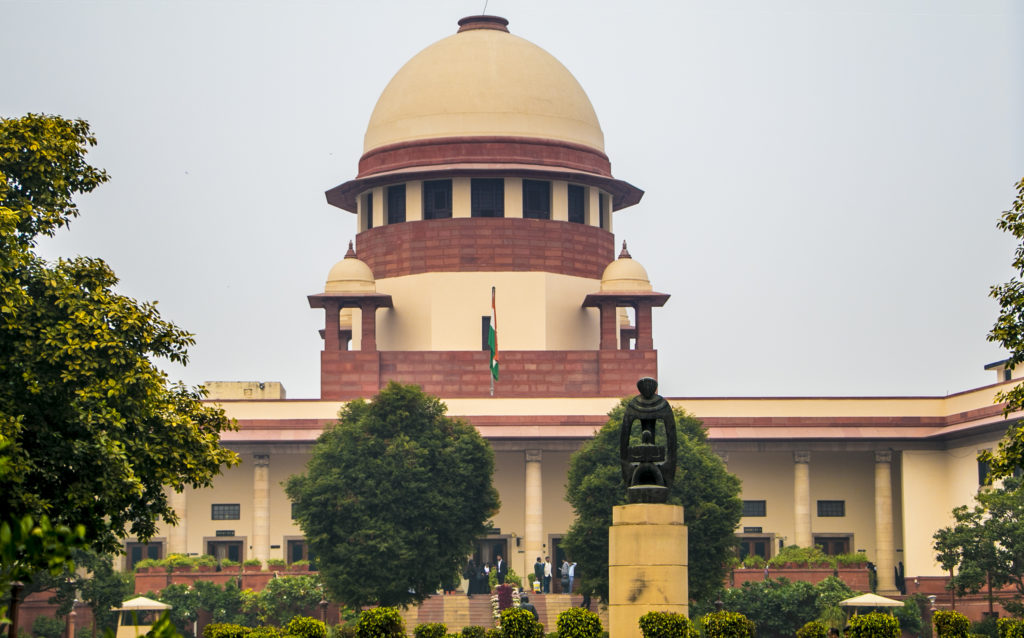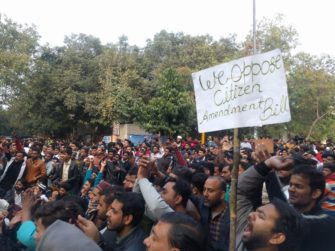
In December of 2019, India’s Hindu-nationalist majority parliament enacted into law the Citizenship Amendment Act (“CAA”). Like it sounds, the 2019 CAA amended India’s 1955 Citizenship Act. What the CAA does is provide a faster path to citizenship for certain individuals who entered India as refugees prior to 2015. According to the Act, individuals who may receive special treatment are Hindus, Sikhs, Buddhists, Jains, Parsis, and Christians. And, in particular, the Act specifies that the residential wait period for citizenship for these individuals is reduced from 11 years to 5 years. The Act was intended to functionally aid non-Muslim refugees from Afghanistan, Pakistan, and Bangladesh, all three of which are Muslim-majority countries. It treats Muslim refugees from Afghanistan, Pakistan, and Bangladesh, as well as largely-Hindu Sri Lankan refugees, Nepali refugees from Bhutan, Burman refugees (who are mostly Rohingya Muslims), and Tibetan refugees differently from the preferred category described above. Because of its overt discrimination on a religious basis, many believe it to be an attempt to augment the body politic in India and, perhaps more to the point, the voting public. This is particularly true in light of India’s strong, constitutional commitment to groups that have traditionally been discriminated against. Indeed, the India Supreme Court has held, in Nagpur Improvement Trust V. Vithal Rao and Others (AIR 1973 SC 689) that “the object [of a law] itself cannot be discriminatory, for otherwise, for instance, if the object is to discriminate against one section of the minority, the discrimination cannot be justified on the ground that there is a reasonable classification.”
Alongside the CAA and, in fact, a trigger of it, is the National Register of Citizens (“NRC”). The NRC was mandated by a 2003 Amendment to the 1955 Citizenship Act, which passed with little or no contention, even though it introduced the “illegal migrant” category that is now the source of much acrimony. It was only 10 years later, however, that, at the Supreme Court of India’s behest, it was implemented in a single Indian state, Assam, located in India’s North East. NRC implementation in Assam resulted in 1.9 million people present in India who claim to be Indian citizens not meeting the documentary requirements for registration and, therefore, being in danger of losing their citizenship. Many of these individuals were Bengali-speaking Hindus, who may or may not have originally been immigrants from Bangladesh. The Hindu-nationalist BJP government took up their cause and drafted the CAA with their particular issues in mind. The fact that a Hindu-nationalist party drafted the CAA to specifically help Hindus is, at least in part, why some believe the CAA to be a non-secular effort to change the nature of Indian citizenship.
Importantly, the NRC has not been implemented outside of Assam, but the government plans to do so in 2021. And it is the combination of the CAA and the NRC that is concerning many citizens. Whether their fears are well-founded or not, many are worried that the NRC will be used to essentially strip individuals born in India of their citizenship and then the CAA will be used to deport them. Whether their fears will materialize remains to be seen, particularly as it is unclear if the CAA will pass constitutional muster when it is tested in the courts.
The courts, for their part, and the Indian Supreme Court in particular, have played an interesting, and sometimes inadvertent role, in India’s winter of protests. To start, the Supreme Court has steadily been forcing the executive branch of the government to carry out its own laws in Assam. It is important to note that the Assam case is unusual though, as the locals who back it, the “Assam Movement,” are anti-immigrant, but not anti-Muslim. Local opposition to the CAA and NRC in Assam is, therefore, based upon the CAA’s permissive stance with respect to non-Muslim immigrants. Still, without the Supreme Court’s push, the NRC might not have been implemented when it was and the combined power of the CAA and NRC might not have been as obvious to the wider population. One might even say that the Indian Supreme Court’s insistence on its institutional role, especially vis-à-vis the executive and legislative branches of government, has precipitated what may become a constitutional crisis if either of these latter, more overtly political branches insists that the CAA is within its constitutional rights.

In addition to its role in forcing NRC implementation in Assam, the Supreme Court has acted permissively with respect to Foreign Tribunals. Those excluded from the NRC rolls can argue their cases before Foreigners Tribunals. These are fast-track, quasi-judicial bodies that put the burden of proof of Indian citizenship or long-term residence in India on the accused. Anyone who fails this test is sent to Assam’s detention centers or is deported. There have been reports of families separated in detention centers and individuals spending years in them, under very poor conditions, before finally proving their citizenship and being released.
The Supreme Court also acted, inadvertently, to fuel protests this fall when it released its ruling that granted Hindus a right to build a temple to Ram on the place in Ayodhya where the Barbri Masjid once stood. The Barbi mosque was torn down by Hindu nationalist activists, after several failed attempts, in 1992. While the Supreme Court certainly didn’t mean to provide advance fuel for the CAA fire, it contributed to a public sense that all branches of the government had turned anti-Muslim, leaving those concerned with protest as the only meaningful route to secure change.
Finally, anyone who follows India’s activist courts should not be surprised that, despite incredible backlogs, the CAA is already before them. The Supreme Court received over 140 petitions to stay the law and issued a ruling in late January that gives the central government four weeks to respond to the petitions. It also issued orders to India’s high courts to not take CAA and NRC-related petitions, thus centralizing Supreme Court control over this particular issue.
The question that activist lawyers would like to get before the Indian Supreme Court is, in some ways, a simple one. Is the government allowed to discriminate on the basis of religion? India’s constitution, in Article 14, clearly states that it cannot. Given that the CAA is, on its face, religiously discriminatory, against citizens and non-citizens, as Assam has proven, it will be difficult for the court to find otherwise. What the court can do is regularize and slow down the process, provide a forum through which to channel public debate, and hope that a political solution is reached before it must provide a legal one, potentially causing a constitutional crisis. If it comes down to the latter, the court, for its part, would likely have to act as a conservative force, insisting that the government adhere to India’s founding constitutional principles.

